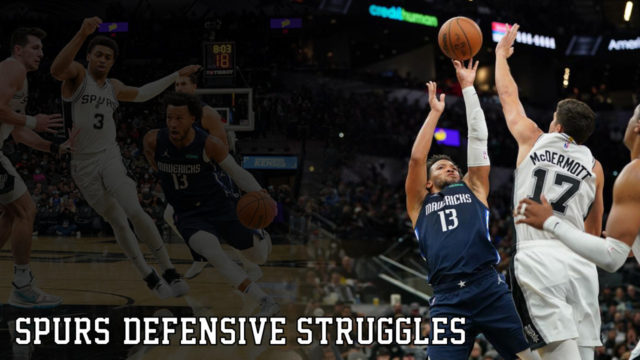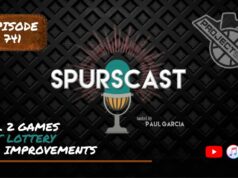An NBA tradition unlike any other, a phrase used chiefly in academic research breaking free from the educational setting and finding itself in the mouths and minds of NBA fans and analysts: “small sample size.”
One of the most challenging tasks for a fan or an analyst this early in the season is distinguishing which team traits are a small sample size fluke and which ones are real.
The story on the San Antonio Spurs coming into the season was that they would be elite on defense and bad, maybe terrible, on offense.
The offense has lived up to expectations so far. The Spurs rank 20th in points per possession so far this season. The defense has been a surprise, though, as the Spurs rank 16th in opponents’ points per possession.
Is this a fluke, just strange early-season noise? Or does that number indicate a problem in the Spurs’ defense?
Looking at the four factors, a group of metrics that can determine why an offense or defense is good or bad, the Spurs rank elite or average in three of the four factors on defense. The Spurs force turnovers on 17.3% of opponents’ possessions, 6th best in the league. They only give up a free throw rate of 14 free throw attempts per 100 field goal attempts, 5th best in the league.
Before Wednesday night’s game against the Dallas Mavericks, the Spurs ranked 15th in opponents’ offensive rebounding percentage. Then Boban Marjanovic happened, and the Spurs dropped to 21st. They are probably closer to average than to 21st with Jakob Poeltl in the lineup.
Opponents’ effective field goal percentage drives the Spurs’ defensive troubles, as their opponents have an effective field goal percent of 54.7%, ranking them 24th in the league. The site Cleaning the Glass has a “location effective field goal percentage” metric that measures how well a team or their opponents would shoot if they shot a league-average percentage on their shot distribution.
The San Antonio Spurs rank 23rd in this metric defensively and ranked 28th before Wednesdays’ game. Even if Spurs’ opponents were shooting an average effective field goal percentage, they would still have a poorly ranked defense since they allow opponents to shoot from efficient locations on the court.
Digging into what locations Spurs’ opponents are frequently shooting from, it appears this problem is caused mainly by their opponents taking a large portion of their shots at the rim. The Spurs rank 27th in opponents’ frequency of shots taken at the rim while ranking 11th in opponent mid-range frequency and 14th in opponent 3 point attempt frequency.
Opponents’ taking a large number of their shots at the rim against the Spurs doesn’t make much sense at first when considering the Spurs have one of the best rim protecting bigs in the league in Poeltl, but there are a few explanations.
First, the Spurs have played a disproportionate number of opponents whose best players are skilled in getting to and scoring at the rim in the Los Angeles Lakers, the Denver Nuggets, and the Milwaukee Bucks.
Second, the Spurs are playing small outside of one traditional big at center, meaning that if the opponent can take the center away from the basket, as the Indiana Pacers could, the Spurs will have a size disadvantage at the rim.
It does seem strange that opponents’ frequency of shots at the rim increases by 8.2% when Poeltl is on the court, the highest increase of any player on the team. The eye and sanity tests have shown that Poeltl has been one of the Spurs’ best players this season, especially on the defensive end of the court.
Overall, Spurs’ opponents shooting a high percentage of their shots at the rim does seem like a flukey early-season stat fueled by who the Spurs’ opponents have been. Expect that to regress to a much better number and the defense to improve quite a bit when it does.
All stats from cleaningtheglass.com






